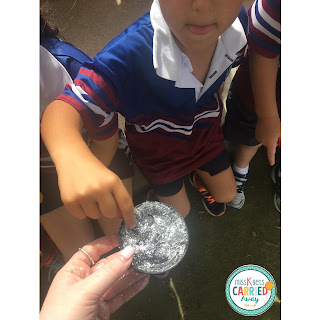If you're in a junior classroom you know the fantastic benefits of having Playdough on hand. It's not only great for fine-motor tasks but it can also easily be used for a number of learning activities and the kids absolutely love it!
I've been through my fair share of playdough recipes but this has to be my go-to.
It's fast, easy, you most likely have the ingredients in your pantry, it's non-toxic and can last for ages!
You will need:
- 1 cup of flour
- 1 cup of water
- 1/2 cup of salt
- 1 tbs oil
- 2 tbs cream of tartar
- Food colouring
Use a small saucepan over a low heat and add all ingredients except the food colouring. Stir until you find the dough has taken shape and come away from the sides of the saucepan. Remove from heat and allow to cool.
Once the dough has cooled, turn out onto your bench and knead until smooth.
Now comes the fun part!
Add 5-6 drops of your chosen food colouring to the dough and knead until the dye has mixed in. Continue to add dye to your dough until you get your ideal colour.
Here are my three finished doughs. To get the orange I added 3 drops of yellow dye and 2 drops of red.
I keep mine in old plastic containers or jars. I find that they last ages in airtight containers. You will get over 6 months use of your playdough if you store it correctly. I have some that have been going for a year!
Here is one of my favourite activities with my little preps. Using the alphabet stampers I get my students to write our CVC or sight words. It gets them practising their reading and writing plus with the added fine-motor aspect.
Win Win!

I also LOVE using Playdough to practice their sight words. It's a great way to get them engaged in reading and writing different high-frequency words.
The pictures above and below are of an activity I have created with the top 100 most used sight words. My students love it.

Click the link below to grab your copy of the activity.

I also LOVE using Playdough to practice their sight words. It's a great way to get them engaged in reading and writing different high-frequency words.
The pictures above and below are of an activity I have created with the top 100 most used sight words. My students love it.

Click the link below to grab your copy of the activity.
Sight Word Playdough Mats & Print and Go sheets!
Let me know if you've had success with this playdough recipe. Add any tips or tricks you have below!











